
GPO Passion HD 10 x 42 package.
A Work Commenced November 29 2021
Product: GPO Passion HD 10 x 42
Country of Manufacture: Japan
Field of View: 112m @1000m (6.4 angular degrees) advertised, 6.24 degrees measured
Exit Pupil: 4.2mm
Eye Relief: 17mm
Chassis: Rubber armoured magnesium alloy, machined aluminium eyecups(removable)
Close Focus: 2m(advertised), 1.9m measured
Dioptre Compensation: +/- 4(integrated central locking dioptre)
Nitrogen Purged: Yes
Waterproof: Yes (5m unknown time)
Coatings: Fully broadband multi-coated, phase and dielectric coatings, PASSIONdrop™ hydrophobic coating
ED Glass: Yes (Two Elements)
Light Transmission: 92%
Tripod Mountable: Yes
Weight: 840g(advertised)848g measured
Dimensions: H/W 15.6/13cm
Accessories: cleaning cloth, hard case, neoprene neck strap, hard case strap, objective covers, ocular covers
Warranty: 10 years
Price (UK): £877.99
Introduction
In the Summer of 2021, I hooked up with a fellow binocular enthusiast, Slim Loghmari, who was following my work and became very interested in my review blogs on various instruments. He took the time to test some of the models I showcased, but he also had a number of excellent binoculars from the newly established company, German Precision Optics(GPO), to compare these models to. It soon became apparent that Slim was a very experienced binocular user, with plenty of first-hand knowledge of models from all price categories. But there was one model that stood out from the crowd for him; the GPO Passion HD 10 x 42. He waxed lyrical about this instrument and told me in no uncertain terms that his Passion HD had phenomenal optics and ergonomics that left all of his other 10 x 42s in the dust. He shared his detailed recollections of this instrument with me, including some high quality 4K video footage(see Preamble 1 above) showcasing its many qualities, as well as performing tests that I had asked him to do on various aspects of its optics and ergonomics. Over the weeks and months, I began vicariously ‘reviewing’ his 10 x 42 Passion HD. Meanwhile, I conducted my own extensive research on GPO behind the scenes. Founded in 2015 by ex-CEO and Head of Development of Carl Zeiss Sport Optics, Richard Schmidt (who spearheaded the development of Zeiss’ current line of Terra, Conquest and Victory SF binoculars), he recruited a world class team of chief executives, scientists and optical engineers from Zeiss, Leica, Swarovski, Meopta and other companies, to bring to market products offering top-drawer optical performance at much more reasonable prices to the consumer. All their products are designed at their headquarters at Inning am Ammersee, in the suburbs of Munich, Germany. Their entry level binoculars – the Passion ED – are assembled in China while their flagship HD series is manufactured in Japan. Once assembled, they are shipped back to Munich, where extensive in-house inspection and quality control takes place, before being dispatched to retailers or individual customers across Europe and North America. GPO now manufacture and sell high-end binoculars, rifle scopes and range finders for the growing sports optics industry.
Reading the opinions of other binocular enthusiasts indicated that GPO binoculars were offering great bang for buck but there was still a degree of buying inertia from people who were reluctant to take the plunge, owing to the fact that they were a relatively new and unknown company. Indeed, all the reports I had read about GPO products were invariably very good to excellent, and had also learned that they had won various awards for their products both in Europe and North America(see Preamble 3). I was fairly confident that the flagship line of binoculars, the Passion HD, was very special indeed. And since Slim trusted my judgement in the past, I figured that it was only fitting that I also trust his judgement regarding the GPO binocular. So, I decided to pull the trigger and order up my own unit for testing. Now, £877.99 is a significant amount of money for almost anyone, but after critically testing the instrument over several weeks, I believe it was indeed justified!
The package arrived double-boxed, with the instrument beautifully presented inside a very thoughtfully styled presentation box as shown above. The binocular was very snugly placed inside a high quality foam frame, with a separate compartment for the custom- designed hard shell case. My immediate impression was “wow!” The care and attention to the presentation of this binocular was second to none: very reminiscent of what I had previously experienced with some high-end Zeiss instruments I encountered in the past! Opening up the choice quality case, I found all the accessories accompanying the binocular, including high-quality ocular and objective covers, a GPO-branded lens cleaning cloth, a very comprehensive instruction manual in several languages, a padded, logoed neck strap and carry strap for the case, and a warranty card. Everything about the package was a quality experience and it was clear to me that GPO had gone to great lengths to make this initial encounter with their product as special as possible. It certainly worked its charm on yours truly!
A Walk Around the Instrument

The GPO Passion HD 10x 42 is a beautiful looking instrument.
Prizing(it took some effort I can tell you!) the immaculately packed instrument from the cut-out foam, I was instantly taken by its fit and finish. While their less expensive Passion ED lines come in a variety of colours, I was relieved to see that GPO went with a traditional charcoal black chassis for these instruments. I’m just not a fan of garish, migraine-inducing colours like the burnt orange offered by new Swarovski models, for example, and not especially taken by two-tone colour schemes either.
In the hand, the instrument feels extremely solid and well made. The chassis is fashioned from a tough but lightweight magnesium alloy, overlaid by rugged and beautifully textured black rubber armouring. The company’s attractive logo of an Eagle with an outstretched wing is prominently displayed on the narrow bridge of the instrument. The unique serial number – 22100731- is engraved under the back of the left ocular.

The unique serial number on the GPO Passion HD.
Unlike a few models I’ve tested from companies like Nikon, which are armoured in a rather cheap, easily frayed synthetic rubber substrate, this GPO Passion HD was much more professionally finished, with no obvious weak areas that would start to come away all too quickly after a few months of sustained field use. The armouring has two textures: smooth along the top and bottom, but more grainy and textured at the sides and the near under belly, facilitating steadier gripping in the hands. What’s really cool about this body armouring is that it does not seem to aggressively attract dust and grime- at least so far as I can make out.
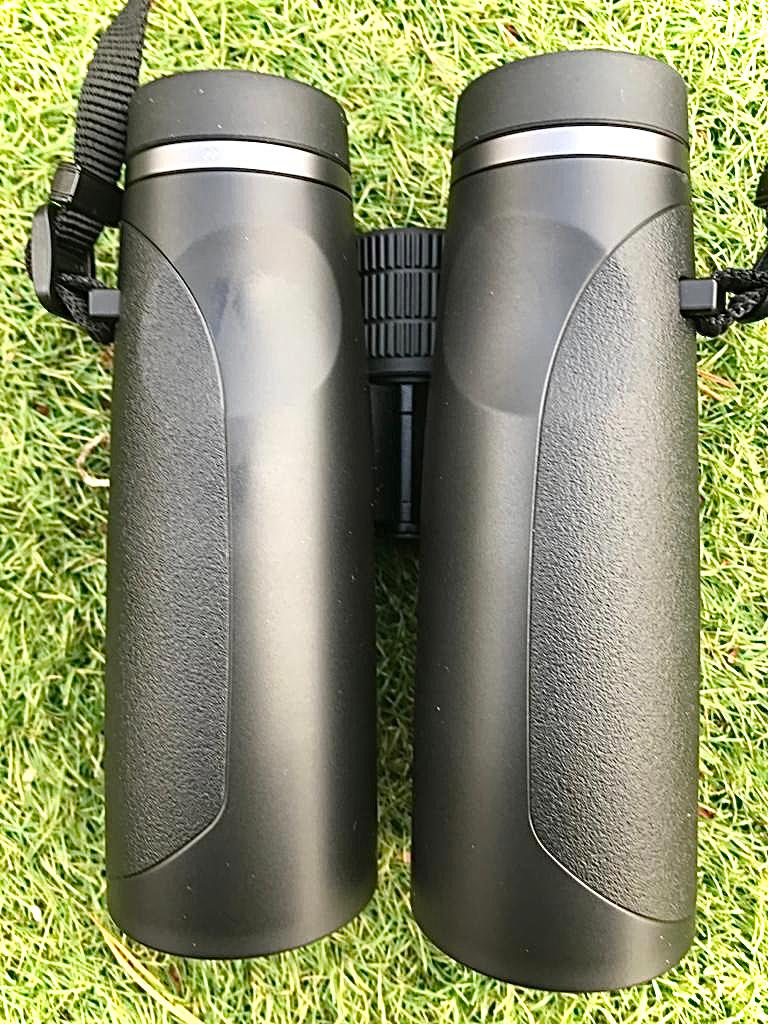
The underside of the GPO Passion HD 10x 42. Note the thumb indents just under the eyepieces.
Examining the over-sized focus wheel, I was delighted to see that it was silky smooth and extremely easy to move with just one finger.

The Passion HD focus wheel is oversized, silky smooth and exceptionally responsive.
The beautifully machined, twist up aluminium eyecups are a real work of art! Fit & finish wise:nothing like them on the market! Overlaid by soft rubber, they are very comfortable when pressed against my eyes. The long, slender barrels were very easy and intuitive to get my hands around, and on the underside my thumbs naturally settled into the two indents for a sturdy grip. Overall, I got the immediate impression that this instrument exuded quality: it had a fit and feel that is – in this size class at least – quite simply in a different league to anything I’ve had the pleasure of owning and using in the past. Without question, this is an alpha binocular build, just like Slim had been crowing on about for weeks on end.
Ergonomics
The Passion HD 10 x 42 has a substantial (848g) weight to it and feels very solid and robust in my medium sized hands. It has a small, single bridge connecting both barrels. It is noteworthy that some of the leaders in the binocular industry have abandoned the open bridge design in favour of its single hinge counterpart. Just look at the design of Swarovski’s new NL Pure line to see what I mean.
The twist-up eyecups are made from machined aluminium and are quite unlike any I had seen before. They are extremely tough and have one intermediate position between fully extended and fully retracted, with absolutely no wiggle room. Soft rubber envelopes the cups and are very comfortable to press your eyes against, even after hours of glassing. These oculars have plenty of eye relief too: I was easily able to image the entire field with my varifocals on with no issues. I would rate these eyecups as one of the very best I’ve seen and used: certainly in a different league to anything made by Nikon and Zeiss, for example.
The central focusing wheel is oversized compared with many other binoculars I’ve used but its exceptional quality is in evidence from the second you lay your fingers on it. Running through just 1.5 revolutions from one extreme of travel to the other, its movements are silky smooth and completely backlash free. Only tiny adjustments are needed to bring an object into focus from several tens of yards distant to only a few yards distant, making it especially appealing to birders who often demand the best focusers on the market to sate their demanding schedules.
I found the focus wheel on the Passion HD to be very similar to that found on the Nikon Monarch HG line, with similar levels of tension and smoothness. When considering the dioptre adjustment however, the GPO Passion HD leaves many of its competitors in the starting blocks. To operate it, you simply pull out the focus wheel and adjust the image in the right barrel until it’s as crystal clear as its left ocular. Once completed, you pop it back in and voila, you’re off to the races!
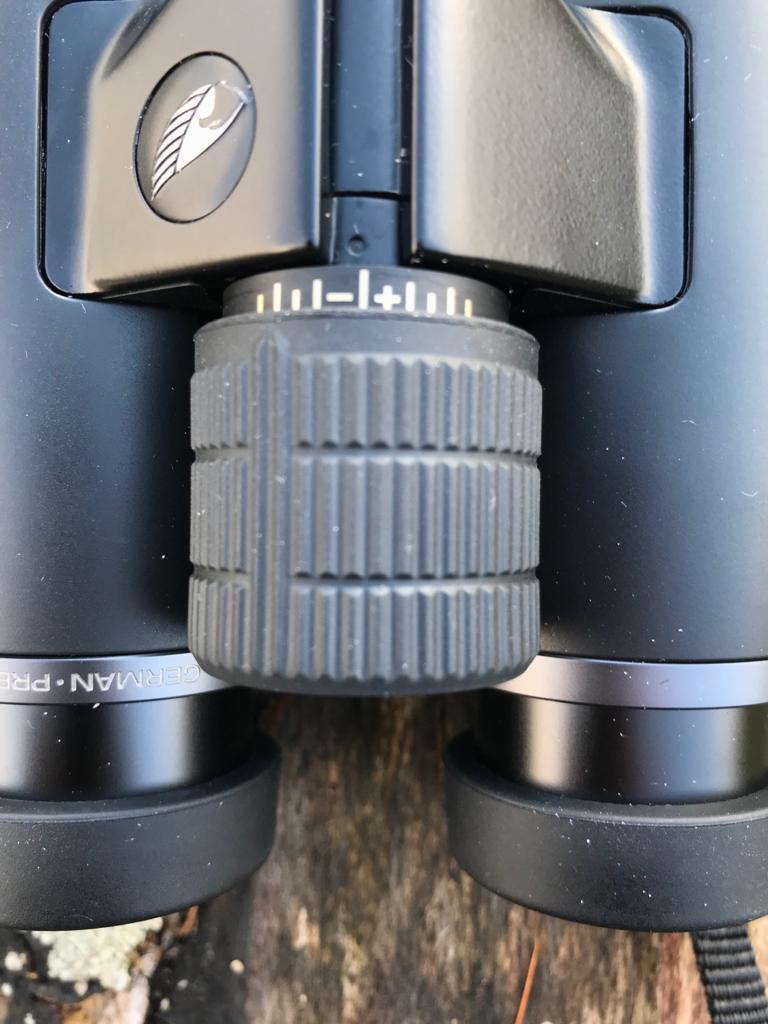
Dioptre compensation is achieved by pulling out the focus wheel and dialling in your preferred setting before pushing it back in to lock.
Compare this to the more cheaply designed locking right eye dioptre on the Monarch HG or Vanguard ED II, for example, and you’ll quickly come to appreciate the sheer sophistication of the Passion HD line, which will never pop loose by accident or budge from its position once it’s set. In this capacity, the GPO dioptre is right up there with the best engineering designs used by Leica, Zeiss and Swarovski. Very well done GPO!
Looking now at the objectives, they are deeply recessed to minimise stray light, and the encroach of rain and dust. I’m especially impressed by the truly excellent baffling of the objective lenses which really helps mitigate the most damaging effects of stray and intensely bright light sources, minimising glare. But it takes more than good baffling do this well: the layers of coatings applied to each lens and prism surface also plays a crucial role here, as we shall see shortly. The eyecups are larger than on most other binoculars I’ve handled. They measure about 42mm in diameter compared with 37mm in many other models. This makes positioning your eyes that little bit easier in practice, and affords greater comfort for eye glass wearers.

The secret of excellent glare suppression is great baffling and great coatings.
Another important ergonomic feature is the hydrophobic coatings applied to the outer lenses of the instrument. GPO’s proprietary PASSIONdrop coating quickly disperses condensation that invariably occurs when glassing in cold or damp conditions. In a side by side test using a control binocular without these hydrophobic coatings, I was quite taken by the much shorter times needed to disperse a fogged-over ocular lens on the GPO. Typically, such fogging can take a few minutes to dissipate without such coatings, in contrast to just a few seconds in the case of the Passion HD binocular. I carried such tests out at both room temperature and also outside, where the mercury hovered at or below zero for about an hour. Breathing on the ocular lenses only took a few seconds to clear. Playing the waiting game when this happens during field use can make all the difference between enjoying your subject or missing it entirely.
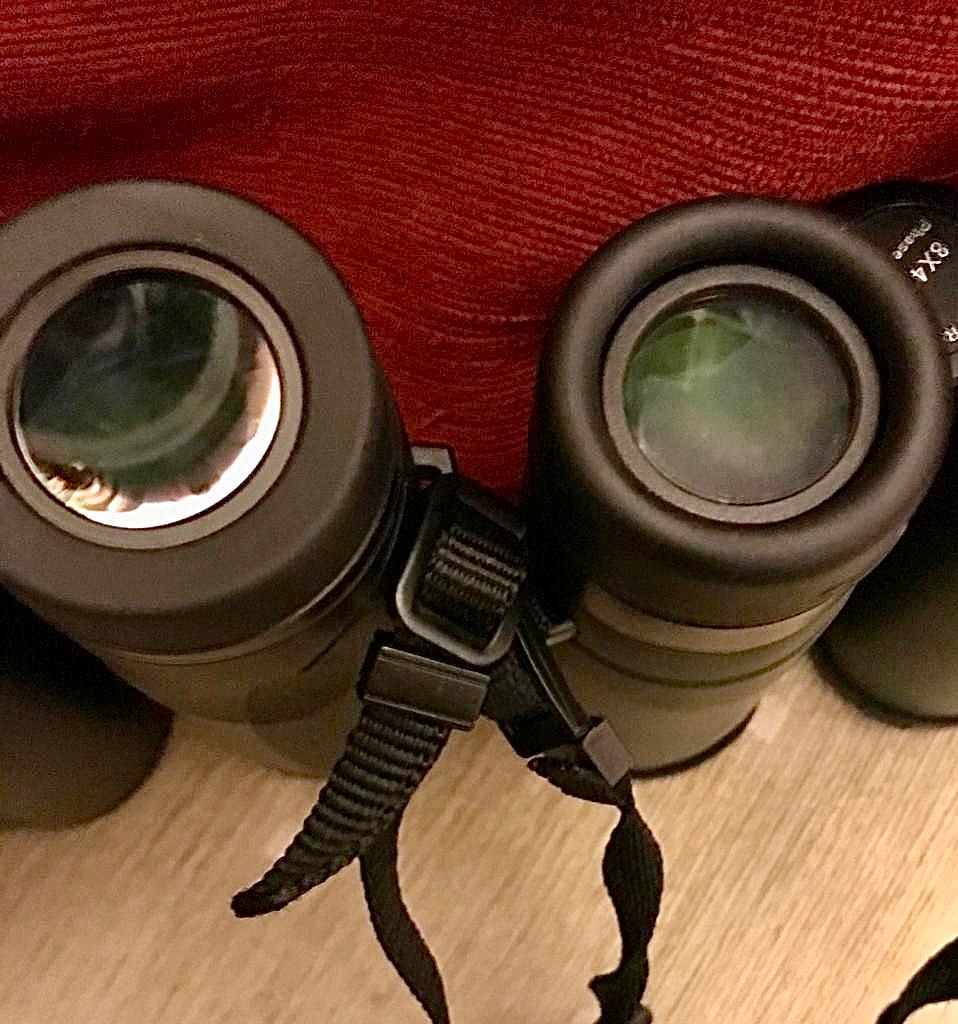
GPO’s proprietary PassionDrop hydrophobic coatings disperse condensation in seconds. The picture above is a comparison between the GPO Passion HD ocular lens (left) 20 seconds after fogging up a non coated control bino(right) at the same time. The condensation still remains on the latter.
The accessories accompanying the instrument are also of very high quality. The rain guard fits over the eyecups really snugly. The objective cover is very reminiscent of those employed by Zeiss on their flagship Victory SF range. Instead of rubber rings that fit over the barrels, the GPO Passion HDs come with a single cap connecting both objectives by a rubber bridge. You push them into the objectives, where they tightly seal off the encroach of dust, water and other debris. GPO even included a spare one just in case the other gets lost. Neat!
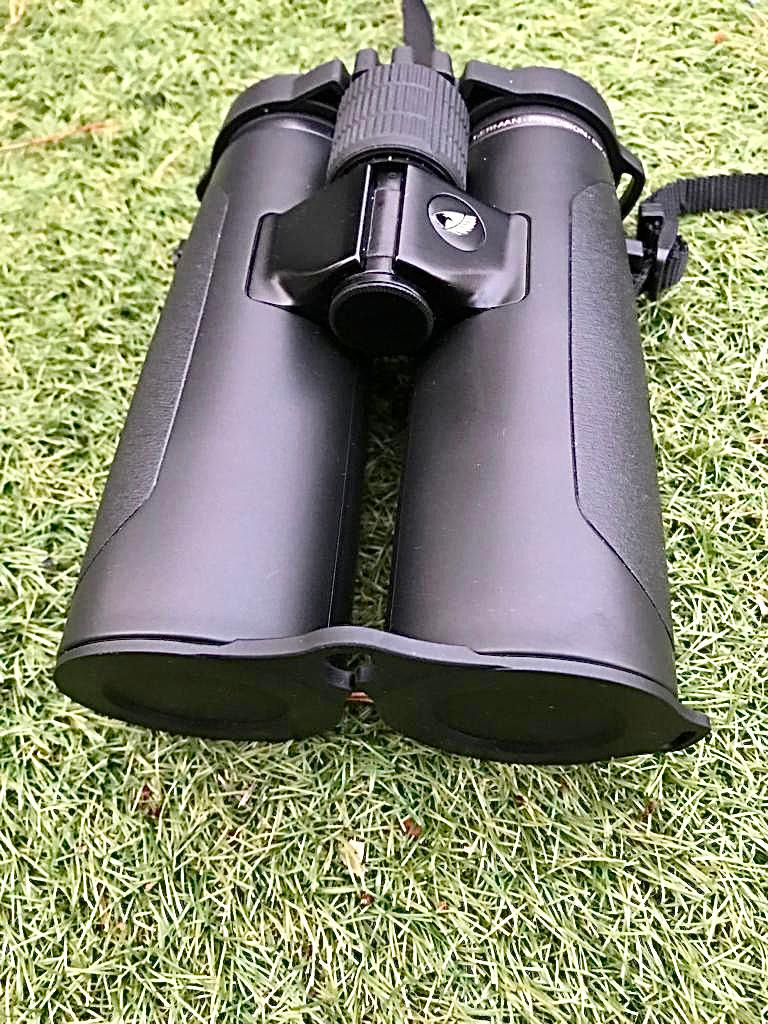
Very Zeissesque!
A hefty binocular like the GPO Passion HD requires a high-quality padded neoprene neck strap to get the best use out of it, and that’s exactly what one receives in the package. Such a high quality strap helps to lighten the load especially when walking with the instrument over long journeys.
Finally, a few words of praise for the accompanying carry case. In a word: Awesome!
But to elaborate, it’s an attractive, green canvass hard shell case, which can be zip-closed. The carrying strap for the case is also padded. You have plenty of room to store the binocular with its strap inside and even has an additional pouch to carry a cleaning cloth(also supplied by GPO) or sachet of desiccant. It rates up there with some of the best cases I’ve had the pleasure of using .

The package comes with a beautifully made, zip-closed hard clamshell case.
Optical Assessment
Now, shall we get down to business?
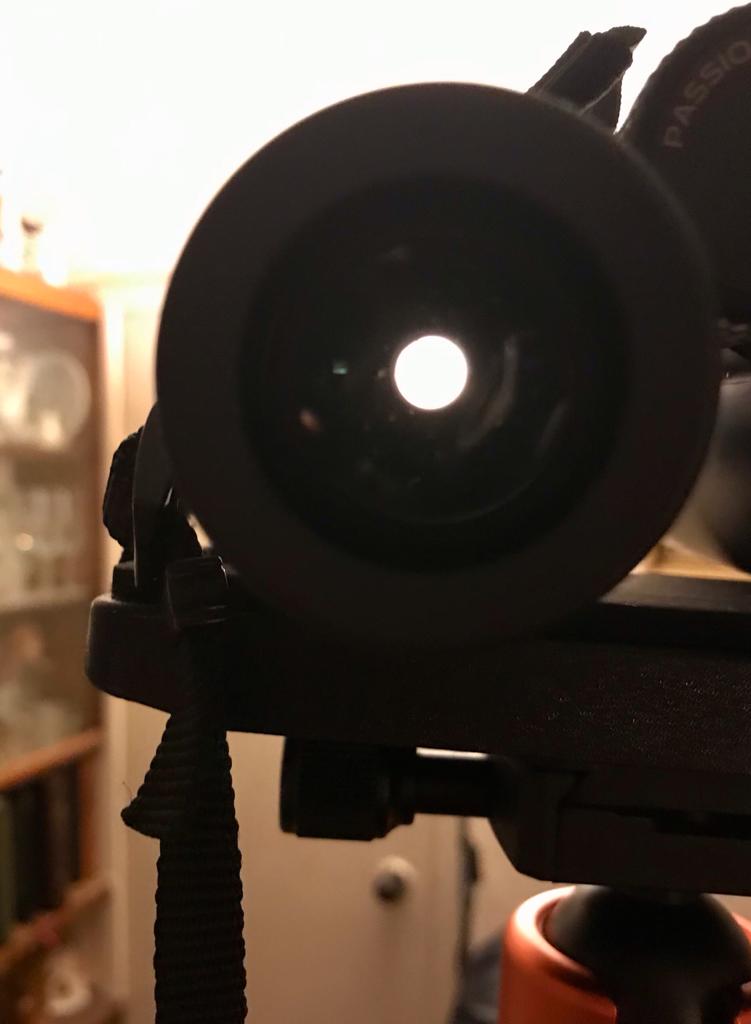
Left exit pupil.
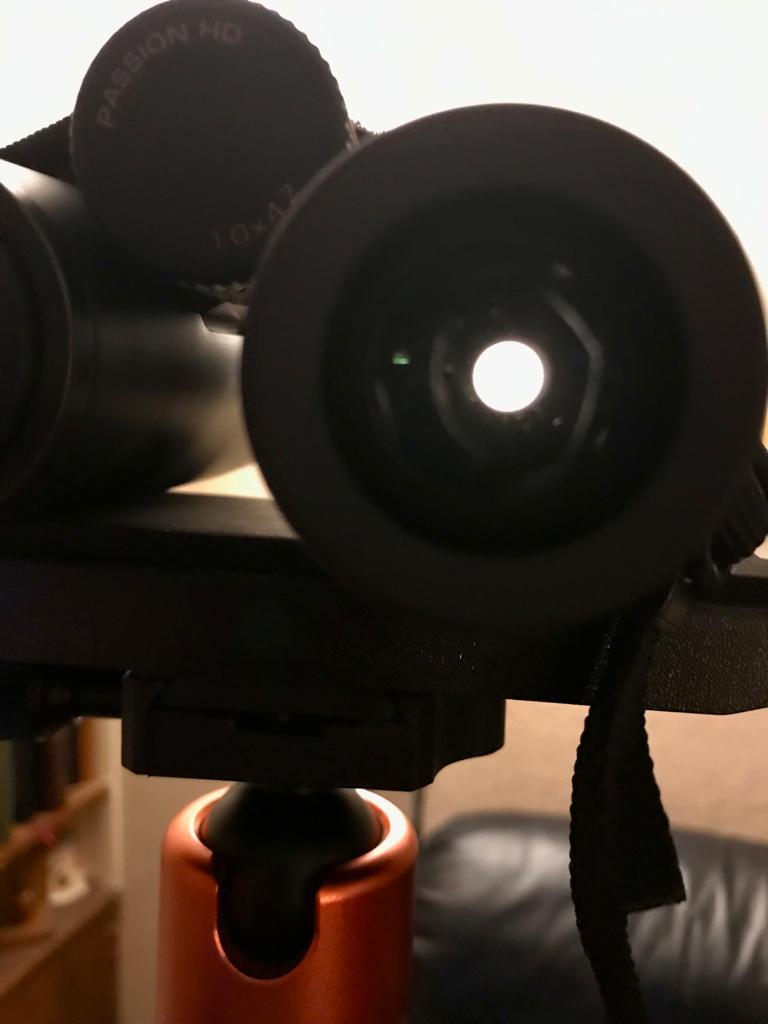
….and the right exit pupil
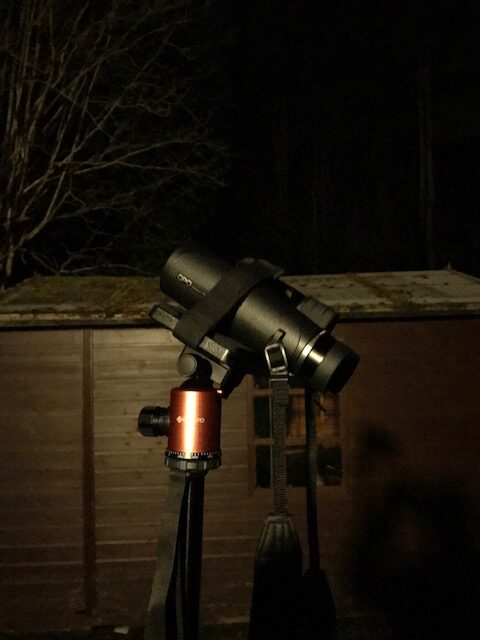
The set up used to measure the field of view of the GPO Passion HD 10 x 42 binocular.
Notes from the Field

Engage your passion with the GPO Passion HD
The GPO Passion HD 10 x42 has an excellent close focus. I measured it at only 1.9m,so slightly less than the advertised 2 metres. This greatly increases its versatility in field use, as it enables the user to view close up objects in exquisite detail. You wouldn’t normally associate a 10 x42 with a great butterfly binocular but that’s exactly what it can do if necessary.
Depth of focus is very impressive in this instrument. At infinity I measured its close focus at about 55 yards. But only slight tweaks of the ultra responsive focus wheel brings you much closer still.

The GPO Passion HD is very comfortable to operate, even while wearing thick gloves.
The GPO Passion HD is very easy to use with thick gloves during cold winter days. Smaller instruments, in contrast, are much more challenging to negotiate with gloves on. It’s just one of the many advantages of using a larger sized binocular.
I’m especially glad that GPO did not resort to any “electrickery,” to borrow a phrase from Catweazle, in going for an overly complex eyepiece design for the Passion HD series, as it is entirely without issues like blackouts and the rolling ball effect you get while panning binoculars with built-in field flatteners.
This instrument really comes into its own when scanning landscapes, as the views are so comfortable and immersive. It’s almost as if you are really sitting in the image. Views of the night sky are spectacular. Pinpoint stars from edge to edge. Because it’s a little on the heavy side, I resorted to using a monopod to get the steadiest views but lengthy spells hand holding the instrument are also eminently possible.
I’ve enjoyed some stunning views with this instrument on dull winter afternoons, when I used it to identify a new bird at one of my local patches: a colourful but somewhat noisy Jay, hiding out among the trees. Though I could not get closer than about 80 yards, I was still able to resolve its beautiful plumage: beige, black, blue and white. The extra reach of the 10x glass really came into its own, as an 8x would have come up a bit short on this occasion. For me, it’s magical moments like this that really help you bond with a binocular.
Conclusions & Recommendations
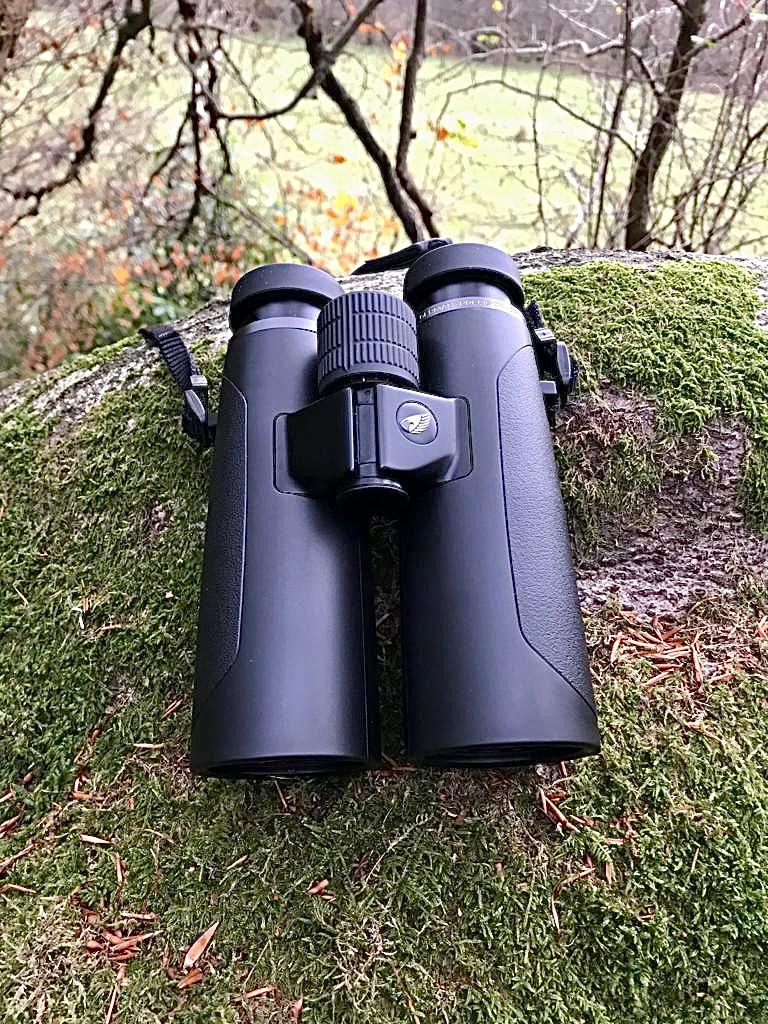
A Binocular for all Seasons.
There is little about the GPO Passion HD 10 x 42 that I could fault. Indeed, I cannot recommend this instrument highly enough. Ergonomically and optically it just ticks all the boxes, and will delight anyone who uses it. Its robustness will undoubtedly guarantee many hassle free years in the field, and the excellent European 10-year warranty will also put your mind at ease in the unlikely event that you hit a snag with it.
Be sure also to check out what this professional ornithologist has stated about the same instrument!
Very highly favoured!
Dr. Neil English is the author of seven books in amateur and professional astronomy. His magnum opus, Chronicling the Golden Age of Astronomy, highlights four centuries of telescopic observing, from Thomas Harriot to Sir Patrick Moore.
Hello Neil,
I am of course very curious how the GPO passion HD 10×42 compares to the Svbony sv202 10×42. Can you say something about that? Thanks!
Ruub
Hello Ruub,
The GPO Passion HD is in another league to the Svbony, optically and ergonomically.
It’s a world class binocular at a very fair price.
Alas, I didn’t test it side by side with the Svbony as it is now in the USA.
Season’s Greetings,
Neil.
Hi, I just stumbled upon your post. My question is, I can’t afford the passion HD, what do you think about the ED? I am thinking of getting the passion ED 8×42 for birding. What do you think? Nancy
Dear Nancy,
Thanks for your message.
I would say go for the GPO Passion ED.
The optics and ergonomics on the lower priced ED binoculars are still excellent.
I don’t think you’d be disappointed with the views, as I can vouch for the excellence of the 10x 32 GPO Passion ED, which has amazing quality for the buck.
I’d recommend Stealthbirding.co.uk as a good dealer if you reside in the UK:
https://stealthbirding.co.uk/collections/binoculars/products/gpo-passion-ed-8×42-black-binoculars
Good luck with your purchase.
Regards,
Neil.
Neil, In AllBinos tests regarding color correction, they say it is a ‘serious flaw’. The unit you tested seems to strongly contradict that. Are there possible quality control issues? Any other thoughts? ( I just received an HD 10×42 but haven’t looked through it yet.)
Dear Herbert,
Every binocular I have ever tested has chromatic aberration to some degree. It’s just the nature of using fast, complex optics. The HD I tested did have some CA, as reported, but it was never an obstacle to seeing any detail or distracting the view. You’ll get the same results with a Leica Noctivid or a high-end Vortex or some such, so I wouldn’t go so far as to call it a flaw.
Of course there will be some sample variation but I think in this case it is the individual testing that contributes the greatest variation in reported CA tests.
With best wishes,
Neil.
Bonjour, je vous félicite pour ce reportage scientifique et technique très précis et rigoureux pour les GPO HD 10×42.
Connaissez vous les GECO Gold ?
Quelle comparaison peut on faire avec les GPO HD ?
Je les trouve assez proches, mais j’aurais besoin de votre avis de professionnel.
Merci
Cordialement
Hello,
Thanks for the feedback.
I know nothing about GECO only that they are related to GPO in some way.
Sorry I can’t be of any more help here.
Neil.
Hi Neil,
Just came across this chat, I’m new to binoculars and thinking of GPO of Leica 10×42’s. I love how small and lighter the Leica appear but wondering on your thoughts?
I have stopped looking at the Zeiss due to build quality.
I have/had all of these binos being discussed in direct comparison. I find the GPO HD line is a phenomenal high quality optic in one of the best built chassis on the market, simply superb. I’d say they are optically slightly superior to the Leica Trinovid HD , but fall a solid step behind the Ultravid line. I’d choose the Ultravid over the GPO everyday, but that’s to be expected it’s double the price. As far as the GPO, in my opinion it’s the top dog optically and in build quality in the upper mid grade $1000 price range.
Hello Michael,
Thanks for your message,
I don’t think you could go wrong with either a GPO Passion HD or a Leica Trinovid/Ultravid/Noctivid.
They all deliver excellent views and have great ergonomics.
Good luck with your purchase.
Best wishes,
Neil.
Hi Neil.
Just in the process of upgrading my bins and have been researching various brands. GPO passion 10×42 HD has been the front runner due to quality and price for that said quality. Your review has been the tipping point. Superb logical review. It answers all the questions I needed to make a choice.
Thank you.
Mick
Your welcome Mick.
Thanks for the feedback.
Best wishes,
Neil.
Hello Neil,
I’m looking a good model GPO for dual purpose, astro-birding, in your opinión which is the Best for my purpose?
Thanks in advance.
Paul
Dear Paul,
Apologies for the delay in getting back to you.
I don’t think you can go wrong with either the GPO Passion EDs or the HDs.
I think the 8x 42 GPO Passion ED would serve you well as a dual purpose birding/astro bino. I think the ED model has a wider fov than the HD IIRC and there is not a great deal of difference between these models.
Hope that helps,
Neil.